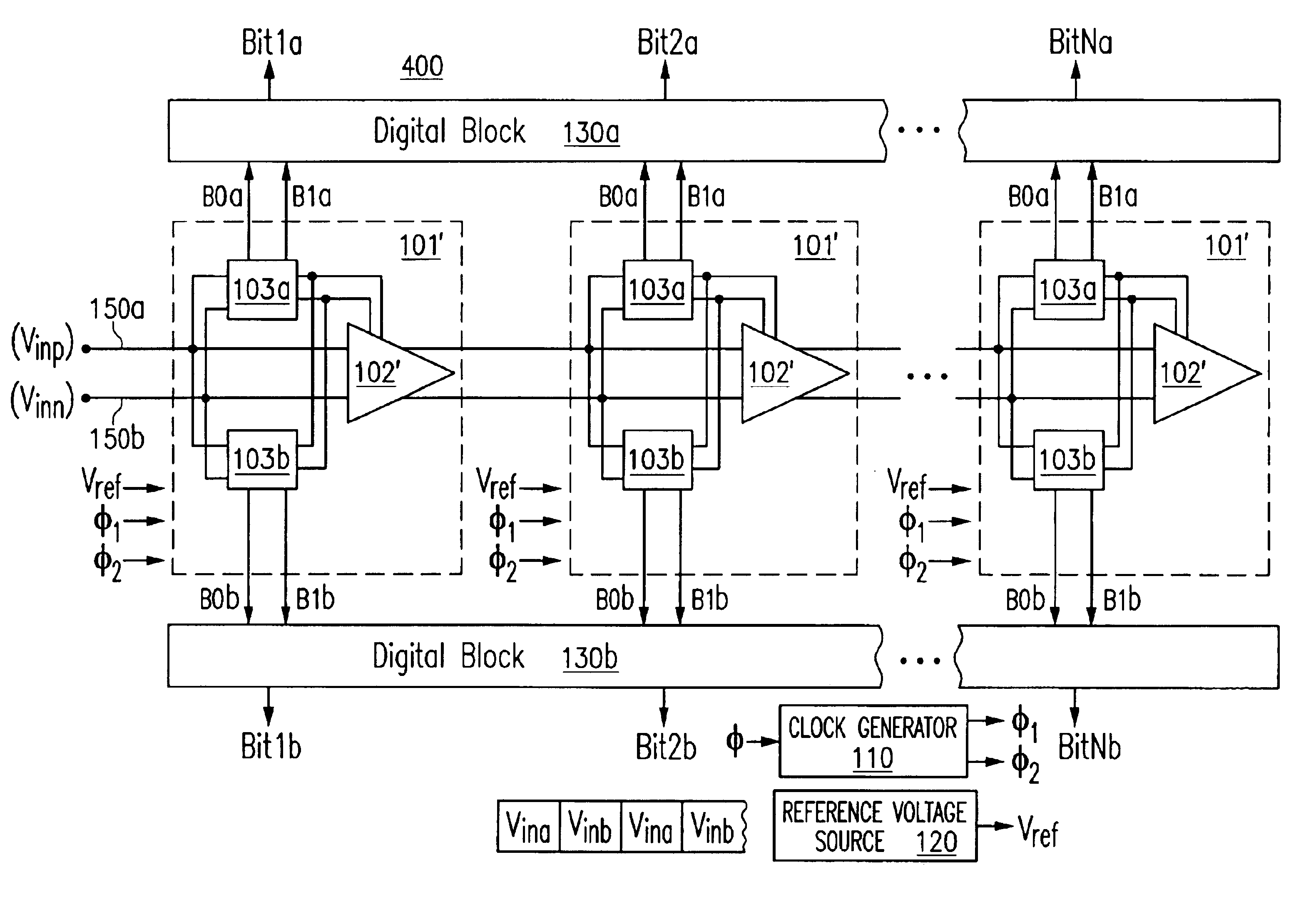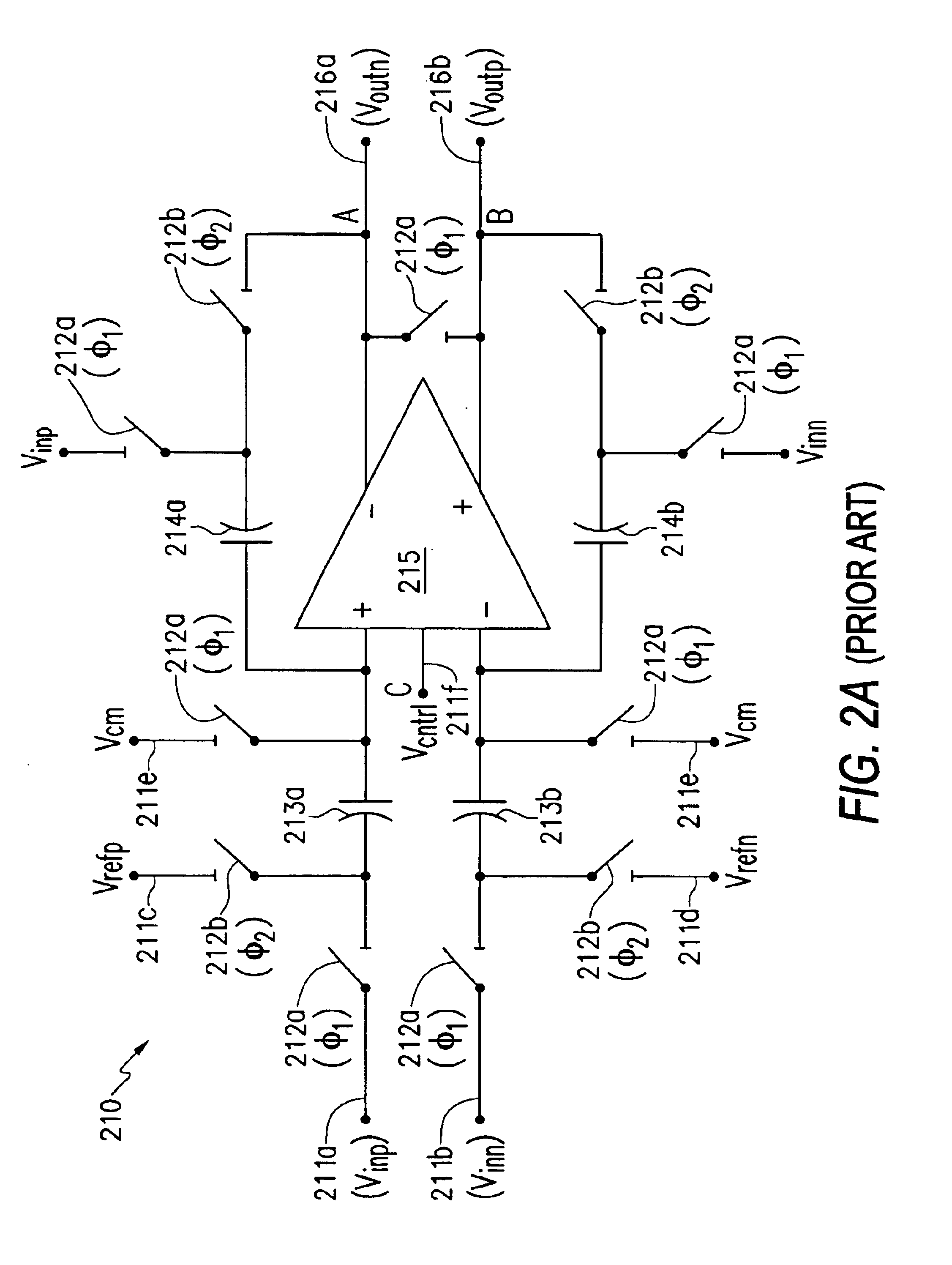Double throughput analog to digital converter
a digital converter and double-throughput technology, applied in the field of analog to digital conversion, can solve the problems of waste of power, constant consumption of dc bias current, waste of power, etc., and achieve the effects of reducing the gain bandwidth of the amplifier block, improving the efficiency and throughput of an analog, and reducing power consumption
- Summary
- Abstract
- Description
- Claims
- Application Information
AI Technical Summary
Benefits of technology
Problems solved by technology
Method used
Image
Examples
Embodiment Construction
The ADC 400 of the exemplary embodiment shown in FIG. 4 include amplifier blocks 102′ that operate continuously. This is achieved by providing the ADC 400 with two input analog signal streams (Vina, Vinb) to convert into two corresponding digital output signals. As shown in FIG. 4, the two analog input signal streams (Vina, Vinb) are combined in a time multiplexed fashion to form a single input signal, which is presented as a differential signal having components Vinp, Vinn to the input signal pins 150a, 150b. Similarly, the two digital output signals Bit1a, Bit2a, . . . BitNa and Bit1b, Bit2b, . . . , BitNb are output from two digital blocks 130a, 130b as described below.
Now referring to the drawings, where like reference numerals designate like elements, FIG. 4 shows a block diagram of the pipelined ADC 400. ADC 400 can include the same clock generator 110 and reference voltage generator 120 as ADC 100 (FIG. 1). Thus, the reference voltage (Vref) and clock signals (φ1, φ2) can ope...
PUM
 Login to View More
Login to View More Abstract
Description
Claims
Application Information
 Login to View More
Login to View More - R&D
- Intellectual Property
- Life Sciences
- Materials
- Tech Scout
- Unparalleled Data Quality
- Higher Quality Content
- 60% Fewer Hallucinations
Browse by: Latest US Patents, China's latest patents, Technical Efficacy Thesaurus, Application Domain, Technology Topic, Popular Technical Reports.
© 2025 PatSnap. All rights reserved.Legal|Privacy policy|Modern Slavery Act Transparency Statement|Sitemap|About US| Contact US: help@patsnap.com



